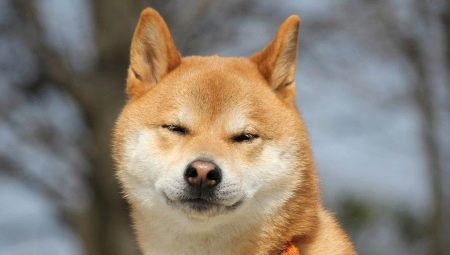Akita Inu is one of the most popular breeds in the whole world, which is not surprising, because many met this animal from television screens - while watching the movie "Hachiko", where the main four-legged hero really impresses with his mind, devotion and nobleness.
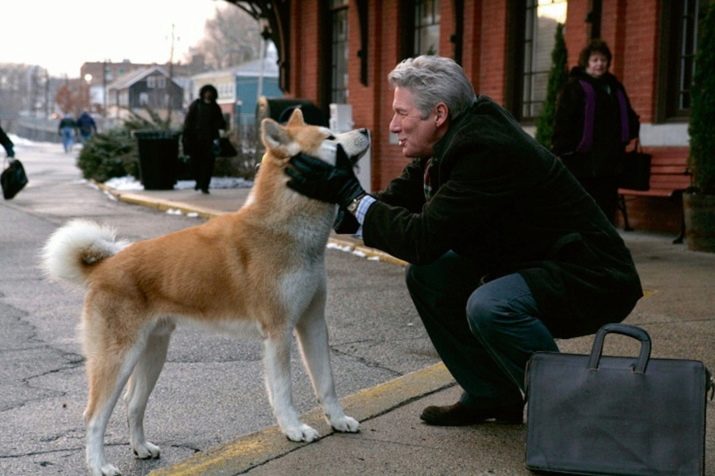
But what do we really know about dogs of this breed, are they really good? Let us consider in more detail the history of their occurrence, features and all the most important nuances of keeping these animals.
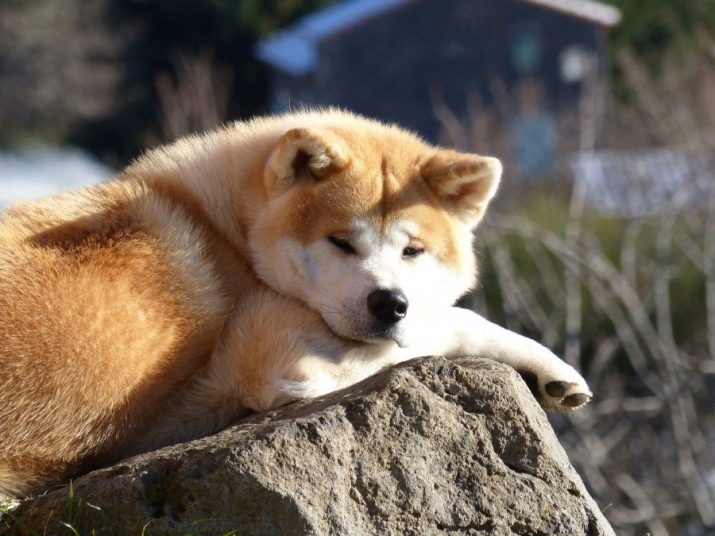
Origin history
The history of Japanese huskies - the so-called famous Akita Inu breed is called - is quite interesting, since many chronicles attribute them to the most ancient breeds. This is known not only from various studies, but also from cave art created by our ancestors.
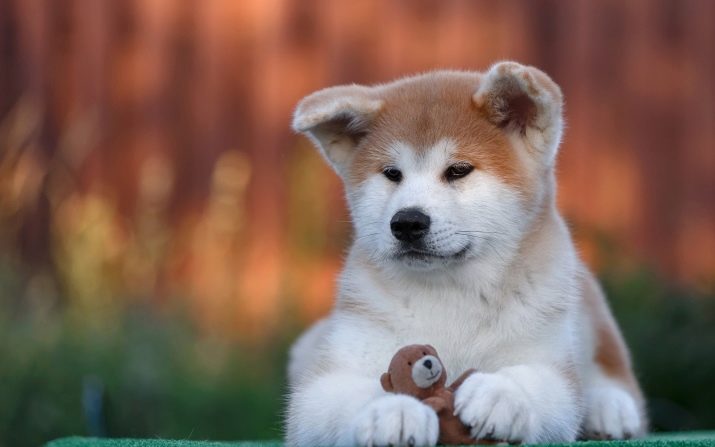
The first individuals in the form in which they appear before us at the present time appeared in the seventeenth century in Japan and belonged to the peasant people. But closer to the eighteenth century, dogs of this breed were recognized as elite, which allowed the animals to receive full guardianship from the Japanese authorities. From that moment, only high-ranking, respected people and family members of the emperor himself could breed these dogs.
During this time period, Akita Inu dog owners were considered wealthy and illustrious.
The Akita Inu breed has been experimented with many times: the dogs were then crossed with Tosa Inu, then with Mastiffs, or even with German Shepherds.But not one of the crosses yielded the desired result, since the external features characteristic only for dogs of this breed were always lost.
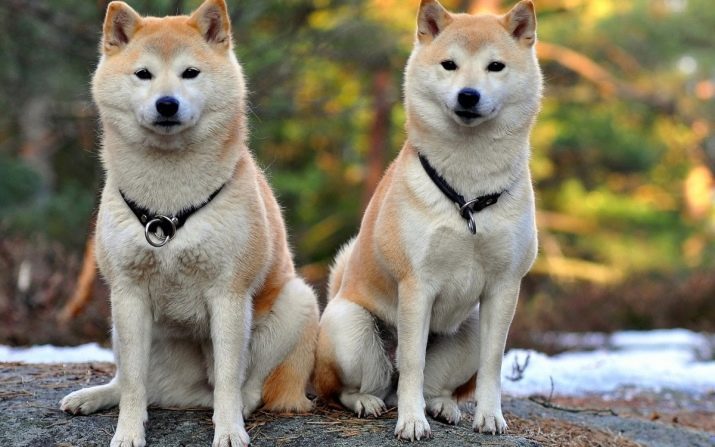
Animals of this species were even participants in World War II., which negatively affected their numbers. But thanks to a special society for the conservation of akita-inu, the breed with its best qualities and thoroughbred has been preserved to this day.
Breed features
Before starting a dog of this breed, it is worthwhile to study its description in more detail, get acquainted with the characteristics, standards and other important nuances.
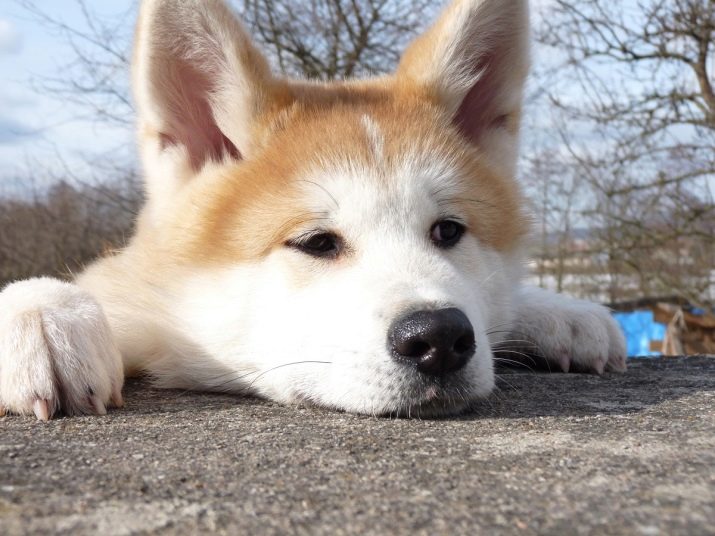
Despite the fact that Akita Inu belongs to the group of large Spitz-shaped dogs, the main purpose of this animal during breeding was to hunt and protect the home from wild animals and strangers. For quite a long time, Akita Inu were used exclusively for hunting large animals., and only relatively recently have they become decorative pets.
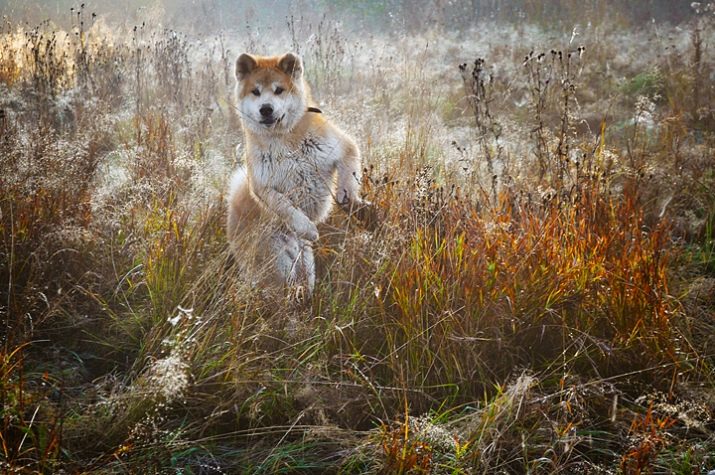
In addition to the fact that dogs of this breed can vary in color and size, they are also divided into Japanese and American species.
Japanese
It was Japanese cynologists who took part in the breeding of this species of this breed, for which the most important factor was not getting a new breed, but restoring old standards that existed in the pre-war period.

It is for the Japanese variety that are characteristic: a special head shape resembling a triangle, a small upturned nose and cunning dark eyes of a small size. The animal has a strong, well-formed body and powerful muscles, and a strong skeleton allows the dog to be more resilient.
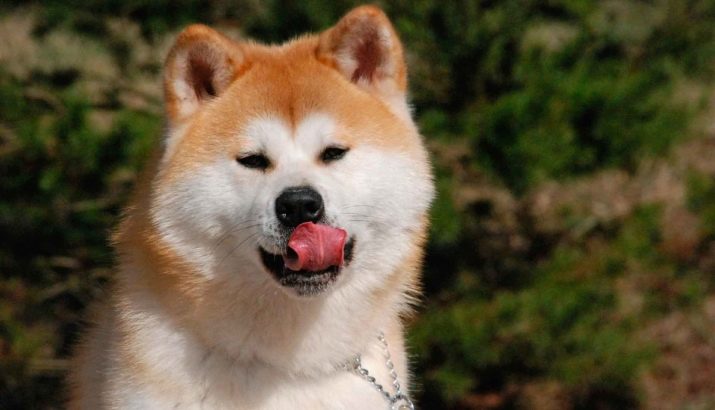
Experienced breeders argue that the most common coat color is a combination of white and red. But in fact, the color can be anything: black, brown or even pinto. The main thing is that he be neat and have no divorces.
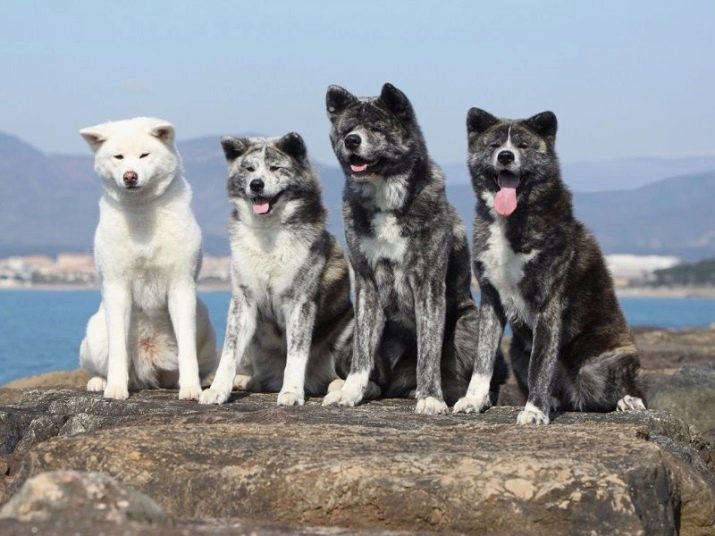
The dog can have both medium-sized coat and long-haired coat.
American
In the early seventies, the American Akita Inu was officially registered, the appearance of which only vaguely resembled the Japanese "version". The quality of the coat, height and weight almost completely coincided with the parameters of the Japanese dog, while the muzzle had a characteristic dark color resembling a mask.

The color, like that of a Japanese dog, can be absolutely anything, but there is one notable feature of one-color white dogs - the absence of a characteristic mask in the muzzle.
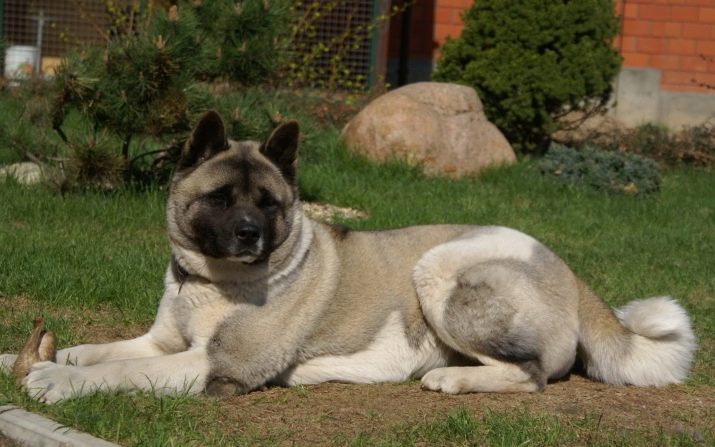
Dwarf
In addition to these two species, dwarf akita ina is also isolated, which is a reduced copy of the standard representative of the breed - the growth of the animal at the withers reaches only 40 centimeters. This view is suitable for those who do not dare to start a large dog, but really wants to become the owner of a small, but very smart and devoted animal.
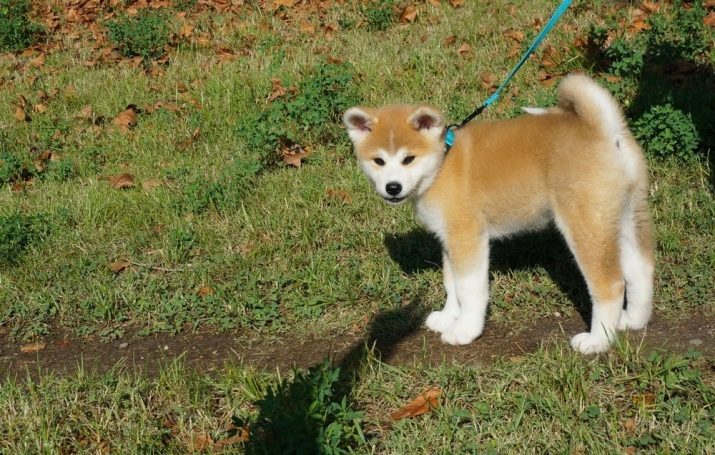
Nature and behavior
Many breeders and owners respond to this breed extremely positively, noting that Akita Inu simply does not have negative aspects of character. Let us consider in more detail whether this is actually so, and also we will understand the characteristics of the behavior of dogs of this breed.

Indeed, it is believed that Akita Inu is endowed with all the best qualities.inherent in other dog breeds, but there are still several negative aspects, but we will talk about them later.
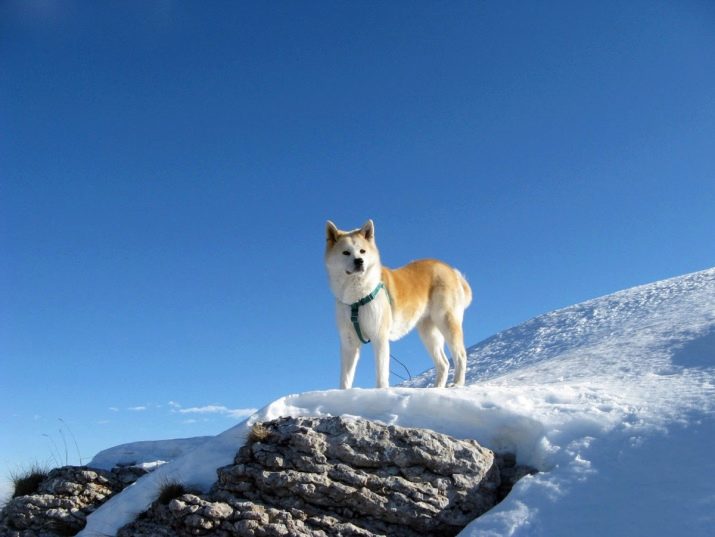
The character of this dog in puppyhood, although it is different mischief and playfulnessbut still quite calm and balanced. Outbreaks of aggressive behavior, anger or sudden mood swings are unusual for Akita Inu, such manifestations can only be caused by dangerous situations that threaten her life or the life of the owner.
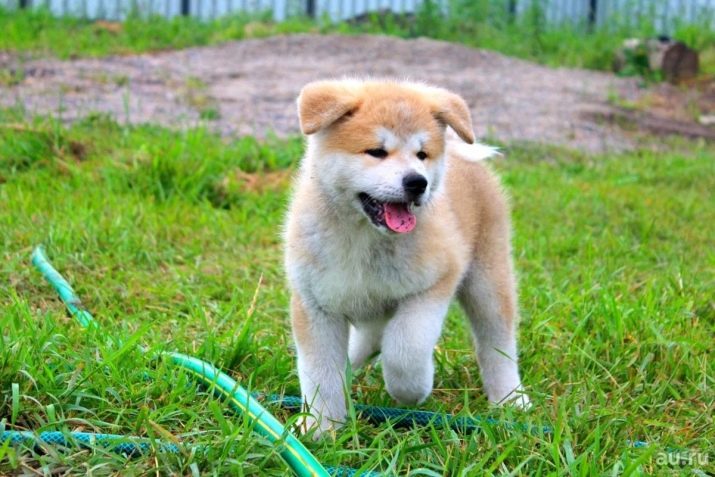
But in such cases, the dog will restrain himself to the last and remain calm. The sharp mind of this animal allows him to fully assess the situation and only in case of urgent need to proceed with the appropriate actions.

Among the negative aspects of the character inherent in this breed, excessive curiosity is noted. The animal will respond to any rustle and the slightest movement and with curiosity to explore various objects, holes, crevices and much more.
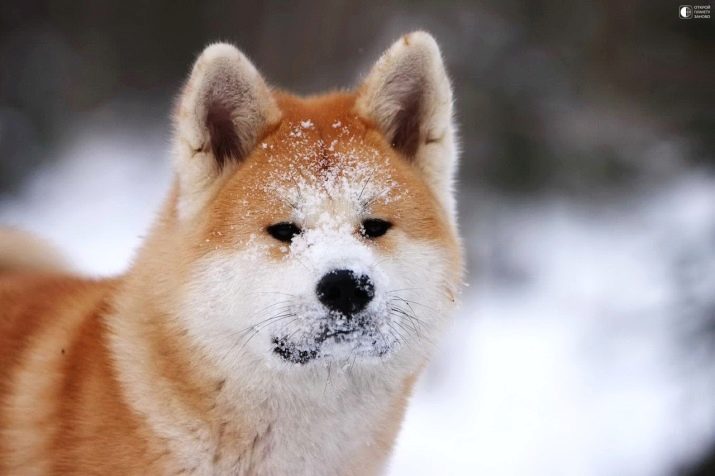
It is worth noting that this quality is not constant, but is typical only for puppies, therefore, as they grow older, the uncontrolled curiosity of Akita Inu will gradually fade and turn into a healthy moderate interest.
Dogs of this breed get along well with a person, so they can become a real friend for a single owner or favorite of an entire family. The animal gets along well with children, so you can not worry, leaving the child with a dog - she will not only not offend him, but will play, and sometimes even look after him.

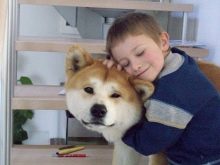
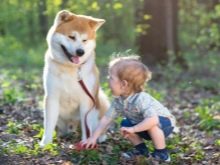
Looking at the calmness and poise of the animal, there may be a false impression that the dog is extremely independent and overly confident. This is not so, since with a longer contact and confidential relationship between the animal and the owner, the Akita Inu is revealed as a tender, vulnerable, friendly, very sensitive and sincere creature.
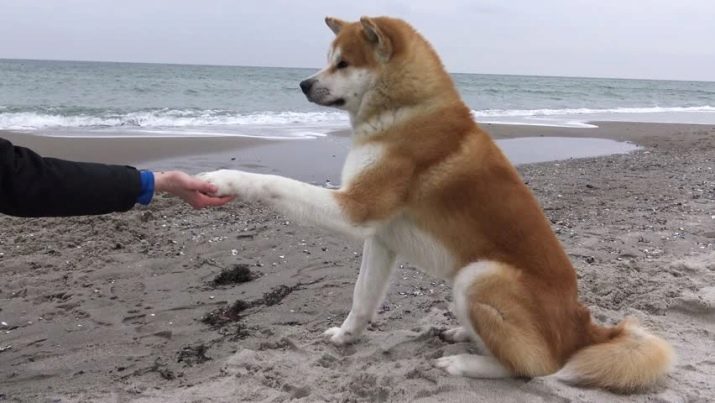
This should be considered when training, because too rough handling can adversely affect the character of the animal. With all external independence, a good attitude is very important for a dog of this breed, and, as a rule, it always reciprocates.
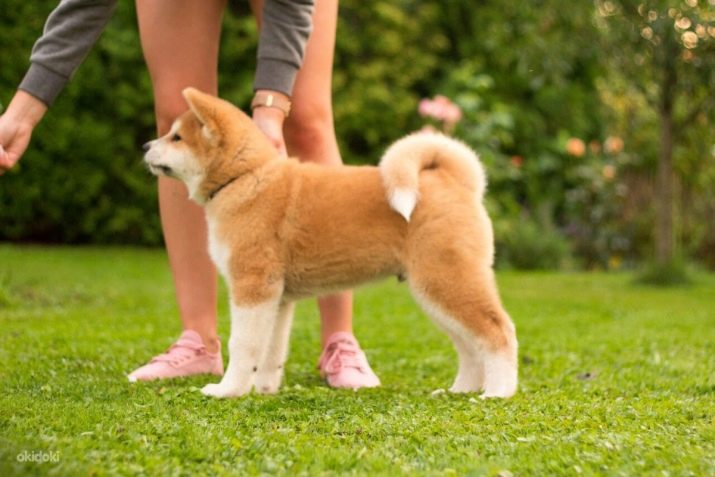
As for the relationship with other animals, everything is much more complicated here. Since the Akita Inu is very reverent and jealous of its territory, the dog will in every way protect and protect it from the encroachments of the other four-legged ones, showing open hostility towards them.
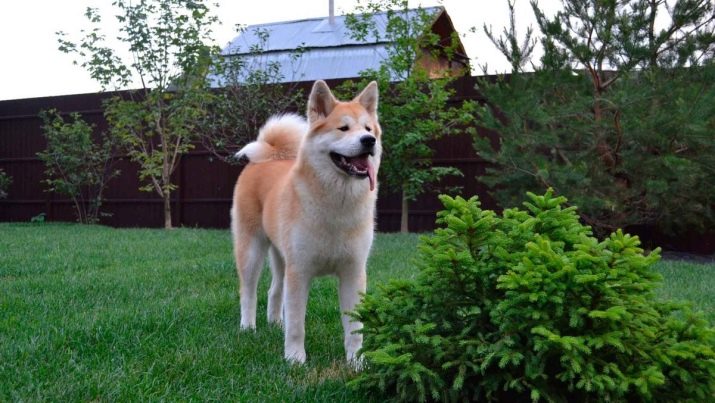
This applies to relationships with both other dogs and cats. If you decide to have another pet in the house, you may need quite a lot of time to accustom the dog to new partners.
Advantages and disadvantages
Like dogs of any other breed, Akita Inu has its own advantages and disadvantages, which must be carefully studied before purchasing.
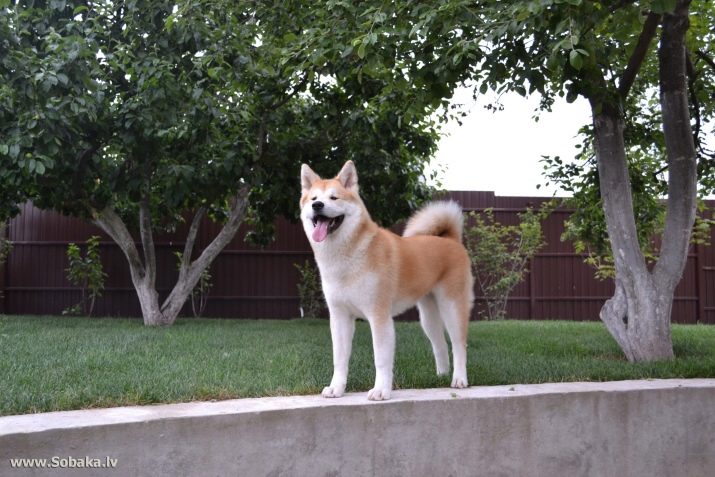
First of all, it is worth studying the positive aspects of the character of the pet.
- A dog of this breed has very outstanding mental abilities.
- Thanks to its well-developed intellect, the animal lends itself to training and training.
- She is practically not afraid of anything and is an excellent defender for the owner and the whole family.
- Akita Inu is characterized by such a quality as cleanliness, which cannot but please the owners.
- Puppies of this animal from a young age are quite wary of strangers, so the dog will definitely not go with someone unfamiliar and will not take food from the wrong hands. This is especially important because people have different intentions, and some of them can seriously harm your pet.
- In addition to protecting its owner, a dog of this breed will also show friendly feelings for him and become a faithful companion until the end of his life.
- Despite its considerable size, Akita Inu is quite suitable for keeping in an apartment without causing damage to household property.
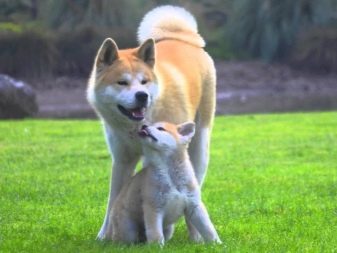

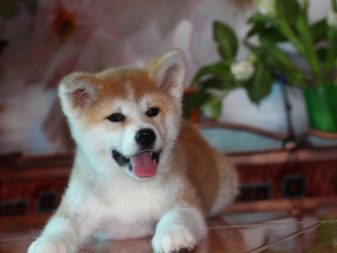
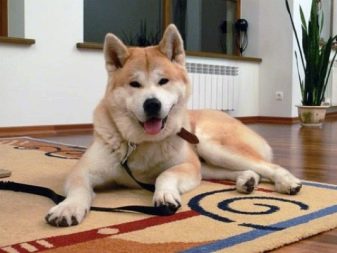
Negative points also need to be taken into account.
- A dog of this breed is very wayward and often demonstrates this character trait, which in itself is not a drawback, until the manifestation of this quality crosses the boundaries of what is permitted.
- It often happens that Akita Inu can be aggressive towards other large animals.
- During the molting period, the owners will have to arm themselves with combs and furminators, as well as conduct regular cleaning in the house, since at this time this breed is characterized by a large amount of wool loss.
- The dog may have problems with nutrition, because it is very selective and picky in this matter. And if everything is a little easier with natural food, then selecting the right dry food can be a rather lengthy process.
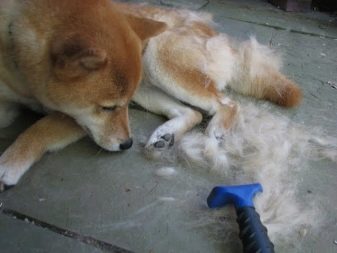
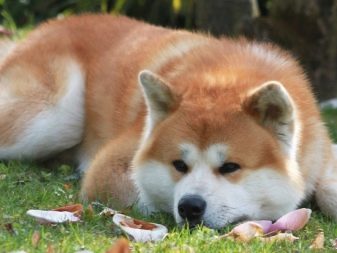
Obviously, this breed has more advantages than disadvantages. It is worth noting that the minuses are also not critical and certainly will not become a decisive factor in choosing a pet, since proper upbringing, care and care will help eliminate almost all the negative aspects of the content of Akita Inu.
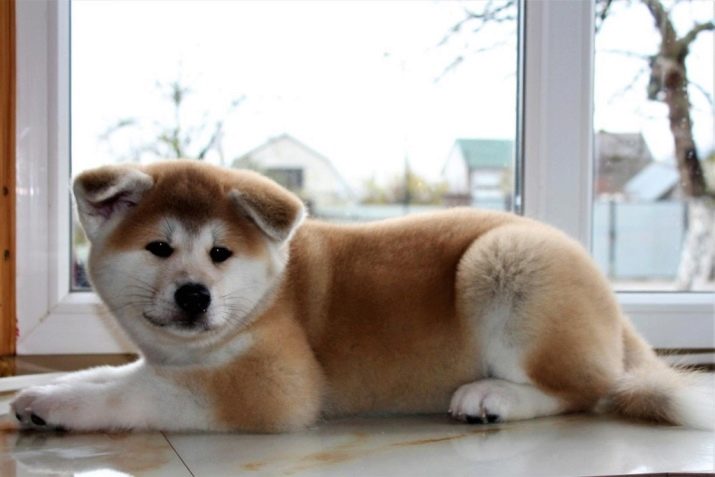
The main thing is to approach the process wisely, show patience and friendliness, and your dog will answer you the same.
How to choose a puppy?
Choosing a puppy is a very serious process that must be approached wisely. If his pedigree, appearance and activity are not important to you - you can take any baby, he will in any case become a favorite and faithful friend of the family.
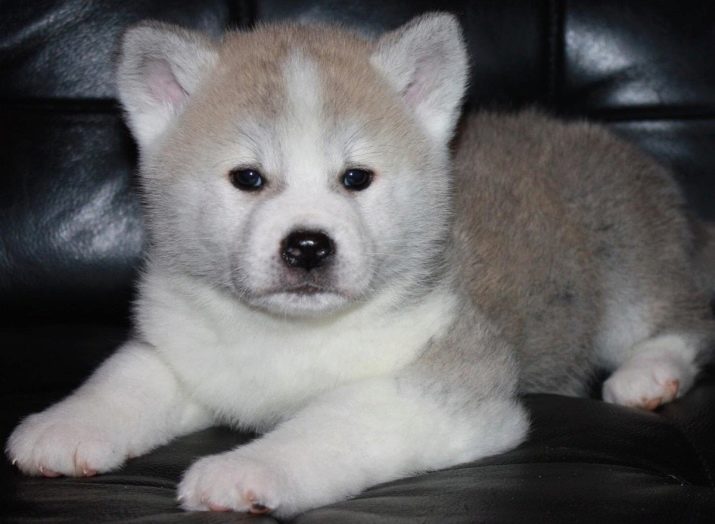
But if you want to get a purebred animal, you are going to participate in various exhibitions with your pet and count on prizes, then when choosing, you need to pay attention to important nuances.
- The first step is to familiarize yourself with the medical records of the puppy’s parents, as well as the pedigree. Each breeder who conscientiously performs his duties must provide these documents.
- Best of all, if the puppy is preliminarily examined by a veterinarian, and the breeder has a conclusion on his health status.
- In addition, for those who intend to participate in exhibitions together with their puppy, it is necessary to ask the breeder for health tests that can detect diseases such as dysplasia and others, or to notify about possible future vision problems.
- Choosing a puppy needs to be given enough time and attention, because in a hurry you can easily make a mistake and choose an animal with a serious illness or appearance defects. In addition, the future owner must carefully prepare, study all the necessary materials and purchase everything that is most needed for the puppy.
- The future owner must pay attention to the conditions in which the puppies and mother are kept, and also ask the breeder about all the nuances of nutrition of both an adult dog and her babies.
- When choosing a baby, you need to carefully examine it, paying attention to the coat, mucous membranes, ears, claws, the condition of the gums and milk teeth. In addition, you need to look at how the puppy behaves and how to interact with others. The baby should have both good health and a stable psyche.
- In addition to the external characteristics and state of health, when choosing a puppy, you need to think about his gender, as boys and girls differ not only in physiology, but sometimes in size and also in behavioral reactions.
- And of course, when choosing a puppy with documents and a pedigree, you should not pay attention to offers with too low a cost, since there is a great chance of running into scammers. Purebred healthy Akita Inu puppies with a full package of documents are very expensive: the minimum price of one individual is from 30 thousand rubles.
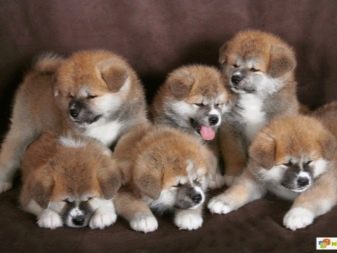
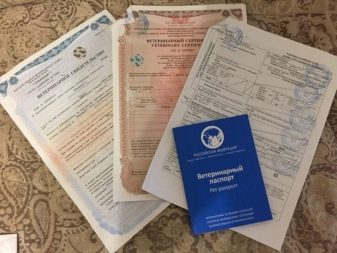
In addition, when choosing a puppy, you should also pay attention to the coat and nose color, and, guided by all these recommendations, you can easily choose a healthy purebred pet for yourself.
Weight and height by month
In order for the dog to grow up healthy and properly formed, it is necessary to monitor the change in its size. For this, the future dog breeder needs to know the height and weight of puppies and adult dogs of the Akita Inu breed for months.
- Akita Inu babies can weigh between 300 and 700 grams. Their size and birth weight will directly depend on the number of puppies that the mother brought and gave birth to.
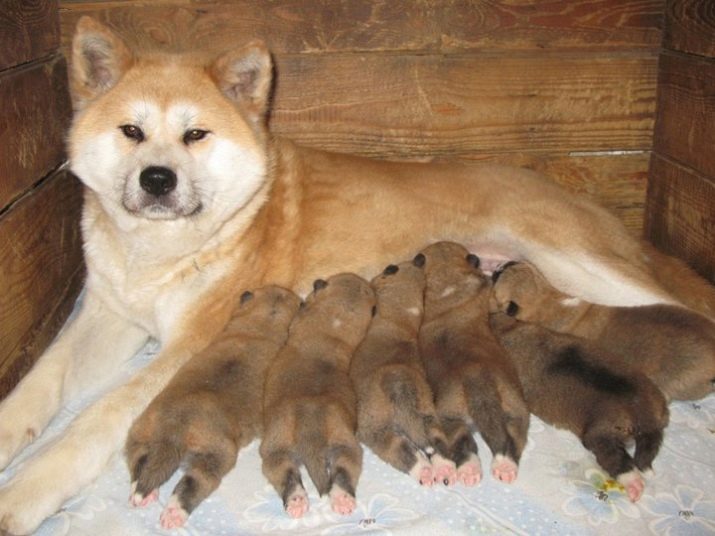
- By the first month of life, the approximate weight of the animal will vary between 3-4 kilograms. During this period, puppies begin to open their eyes and try to take the first steps, and the fastest can even run awkwardly. The puppy's growth during this period can reach 35 centimeters.
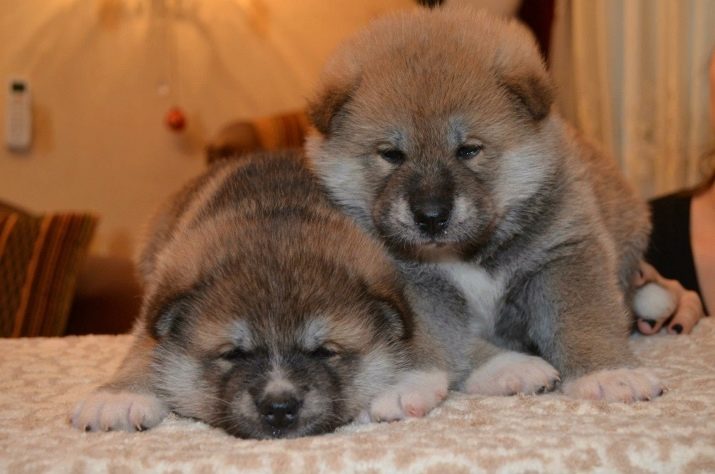
- By the second month, the baby is weaned from the mother, as well as the beginning of raising the ears.The weight of the animal is gradually increasing and can reach 10 kilograms, and height - 38 centimeters.
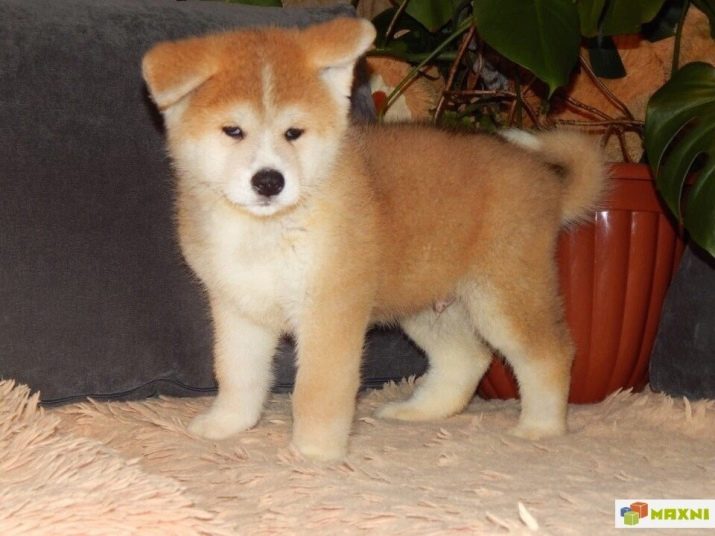
- By the age of three months, you need to determine the plan of training and training and gradually begin to introduce classes into puppy mode. Its growth by three months can reach 40–43 centimeters, and weight can vary within 12-14 kilograms.
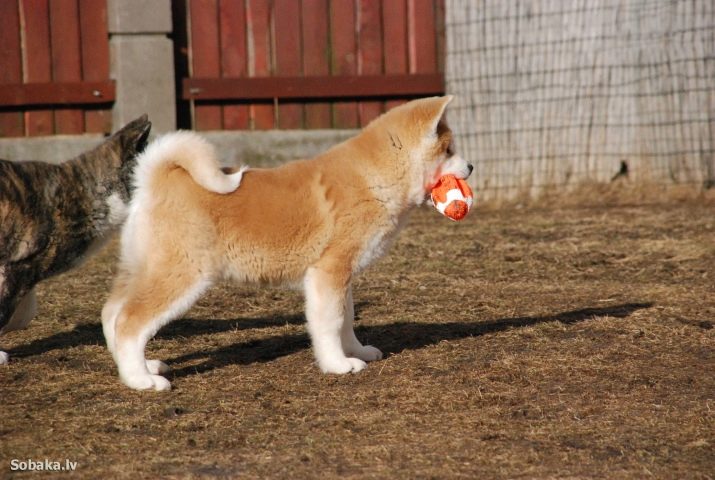
- At four months old, regular training and constant physical activity should be present in the puppy's life. Also, for this period, the complete formation of the ears is characteristic. The baby's height reaches 50 centimeters, and the maximum weight can be about 22 kilograms.
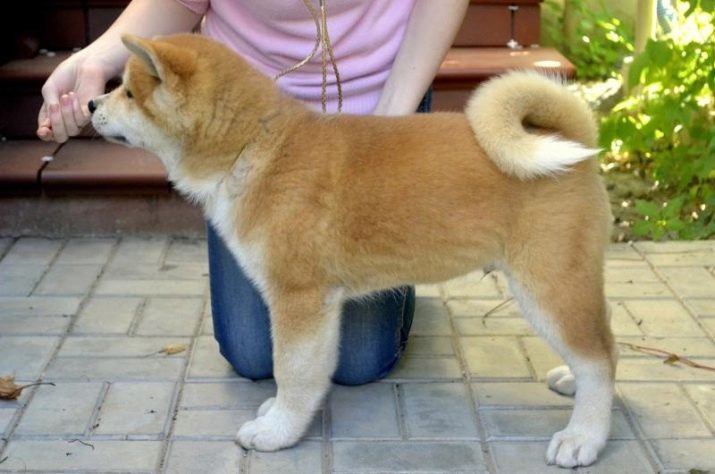
- By five months old, it is necessary to start introducing regular long walks in the fresh air into the puppy's day regimen, as well as closely monitor his games and prohibit them after eating - this can harm the puppy. By five months old, an Akita Inu puppy can grow up to 55 centimeters and put on weight up to 25 kilograms.
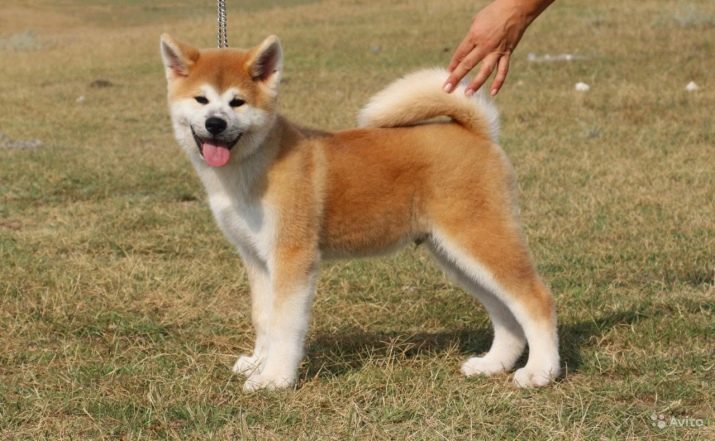
- In the period from six to nine months, the baby Akita Inu outwardly already resembles an adult dog, and the proportions of the body take on the proper form. In addition, during this period, the puppy's character finally develops, so it is very important to conduct an effective training before that. The puppy's growth in this period varies from 56 to 64 centimeters, and weight - from 26 to 37 kilograms.
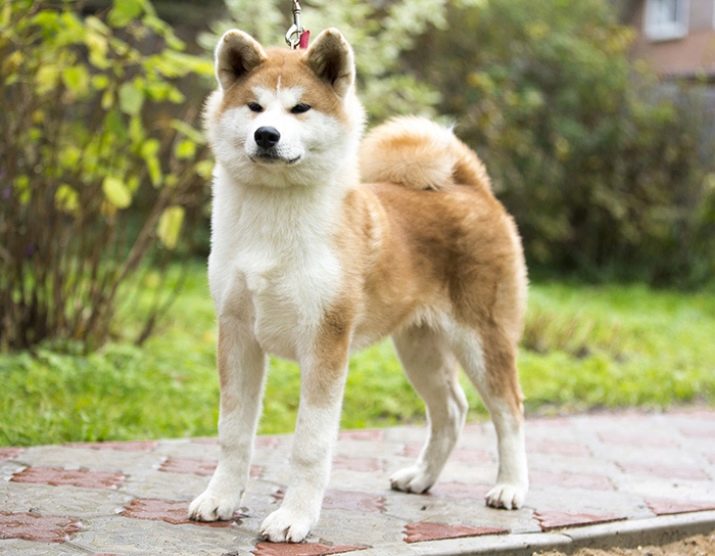
- In the period up to a year, weight gain and growth development is much slower, but the skeleton of the animal is actively formed, the body takes on the forms characteristic of adult dogs. Growth parameters at the end of this period are approximately 64 centimeters, and the weight reaches a mark of 40 kilograms.

Though by year, the animal already looks like an adult, the dog is still not fully formed. The final maturation and full development occurs only by the age of 3 years of Akita Inu: a skeleton is formed and the chest is expanding.
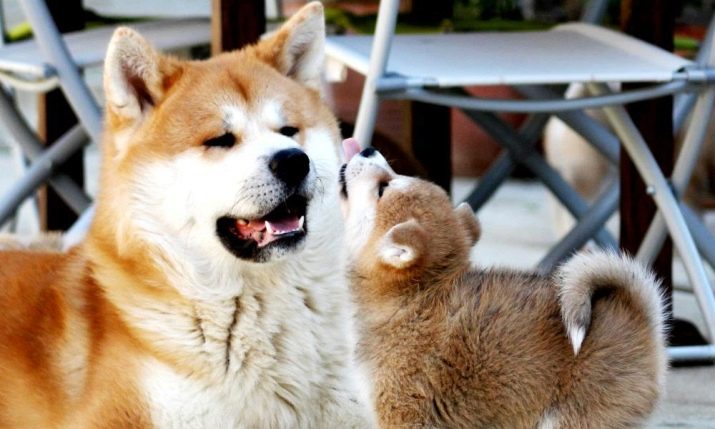
Conditions of detention and care
In order for the animal to be healthy both physically and psychologically, it is necessary to provide him with comfortable living conditions and proper care. The animal needs to be combed regularly, bathed periodically, monitor the condition of claws, teeth and ears. Below, we consider in detail what conditions are necessary for Akita Inu to live in an apartment and in a country house, and what are the features of the care procedures.
Content
First of all, when a puppy appears in the house, you need to determine the location of his personal place. This should be a cozy “corner”, from which a large part of the surrounding space is clearly visible, but which is protected from drafts and direct sunlight.
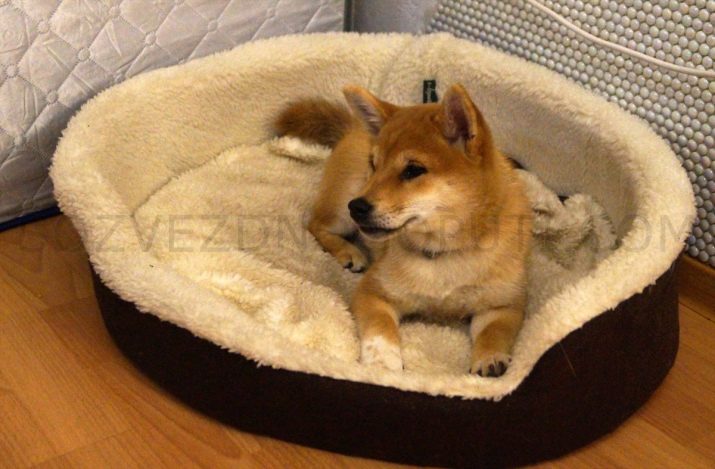
The personal place of the dog should be comfortable for sleeping and relaxing.
It is also necessary to ensure that the "corner" of the dog is always clean. Rest on a dirty litter with the remains of tasty foods and food is not allowed. In addition, you need to feed the dog in a designated place, located at some distance from the litter.

You can really keep the dog in the apartment, but for this you need to provide it with everything you need: regular active walking, solid goodies and toys. Active walks and games will help the animal to pour out excess energy, and solid treats will provide a warm-up of teeth and jaws, as well as protect the owner’s belongings from damage.
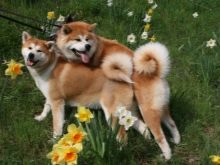
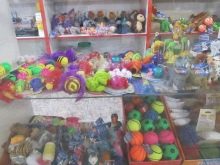
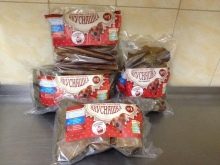
If you plan to keep the dog on the street, the recommendations will be slightly different, but the principle remains the same: the dog should have everything necessary for a comfortable stay. It is worth noting that Akita Inu perfectly tolerates the cold, so it can live on the street even in winter.
It is necessary to make sure that on the street, in addition to the territory that the dog guards, the dog has its own place to rest. Best of all, it would be a fairly large aviary with a summer bench and an insulated spacious winter booth. It is necessary to place a fenced area so that the rest of the yard is in full view of the dog.
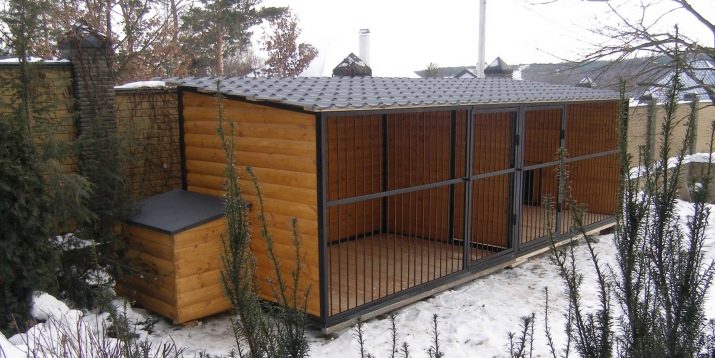
So she can at any time notify the owner of the danger.
If you plan to keep Akita Inu with other pets, you must immediately, from a young age, begin to accustom your dog to respect for someone else’s space and respect for other animals, especially if they are smaller than him.
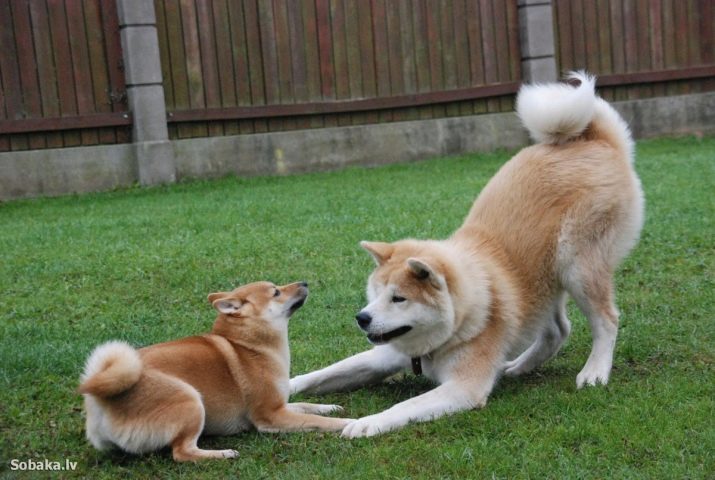
The thing is that during active games, Akita can unknowingly harm small pets.
In addition, it is necessary to feed the dog separately from other animals and in the process of training to identify the boundaries of someone else’s space while eating: Akita should not go into someone else’s bowl and eat food of other animals (just like they should not touch the dog’s food).
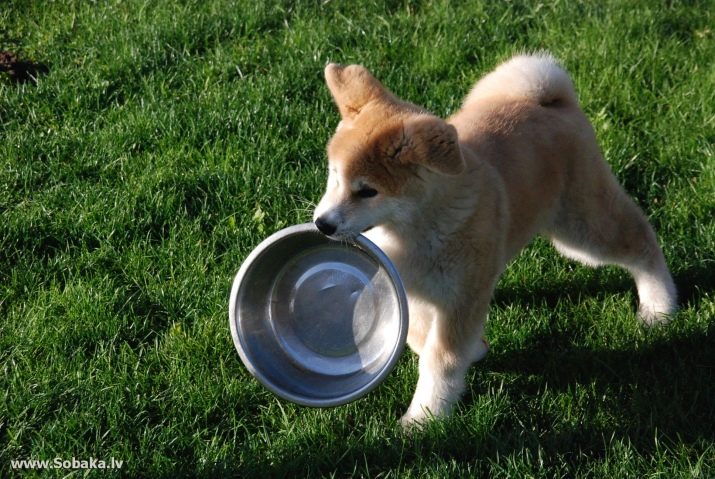
Care
Caring for the animal must begin as early as puppyhood, gradually accustoming the dog to regular washing of the paws, combing the hair and cutting the nails, which is especially difficult because there is always a risk of damaging the vessels in the claws and causing pain to the animal.
Bringing the puppy to the house may require bathing., since when keeping a large number of babies, breeders may simply not have time to take care of the cleanliness of each of them.
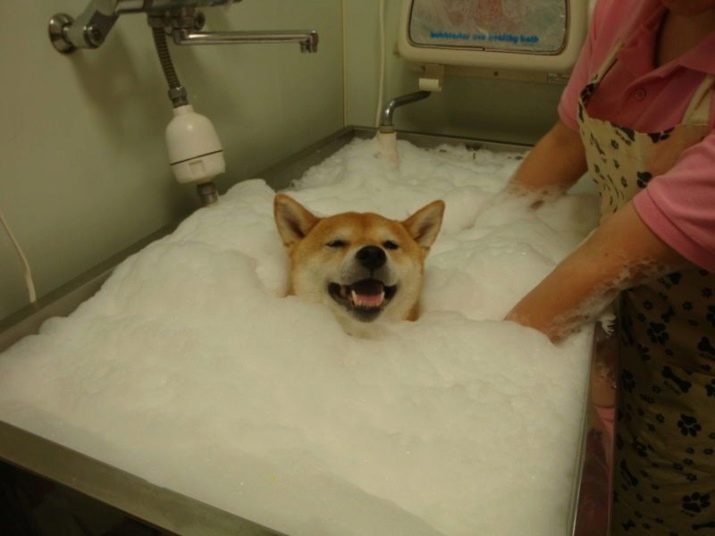
In order not to scare and not injure the baby, you need to carry out the procedure correctly.
- First you need to cover the bottom of the bathtub with a thick towel or rubber mat so that the dog’s paws do not slide on the surface of the bathtub.
- In order not to harm the skin and coat of the baby, it is necessary to select gentle shampoos that match the characteristics of the skin of the dog and its age. It is not recommended to wash the puppy with a product for adult dogs: this can cause irritation or an allergic reaction.
- Some shampoos are concentrated, it is necessary to take this into account and dilute the product with water before washing. Otherwise, the shampoo concentrate may cause dry skin.
- After washing, it is necessary to thoroughly pat the animal's hair with a towel. It is necessary to have a personal thing for the dog that will be used only during its bathing or washing its paws.
- If it is cold in your home and the dog cannot dry on its own without freezing, you should dry its hair with a powerful hairdryer and comb it thoroughly.
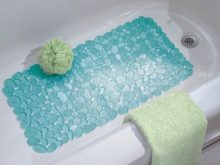
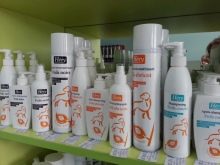

Bathing an adult is practically no different from bathing a puppy, you only need to hold the dog if it resists and use a larger towel.
The paws of the animal need to be washed every time after a walk, otherwise the dog will move around the rooms, leaving dirty traces everywhere. The procedure can be carried out in any way convenient for you, for example: in a small basin, in the bathroom or in a special device for washing paws.

Akita Inu has a dense woolen coat that needs careful care. Without combing, the hair can caking and tangling, often even tassels can form. It is necessary to tidy up the dog’s coat at least several times a week, starting from the head and gradually moving to the tail.
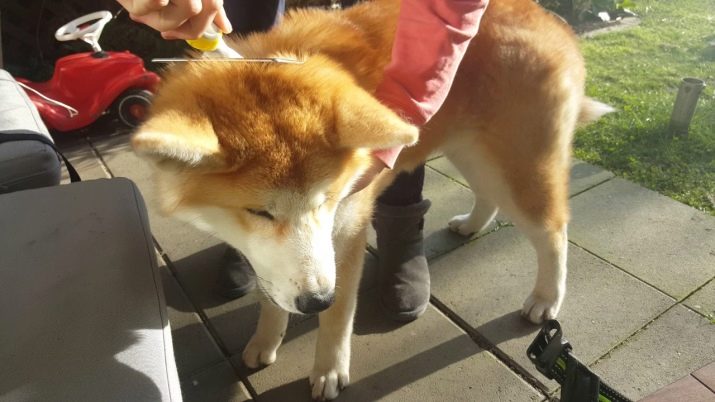
Do not comb the animal against the coat: this can cause the dog discomfort.
If necessary, you can contact the groomers who cut the hair of the animal, and if you are afraid to cut the claws of the dog yourself, you can also turn to professionals for help.
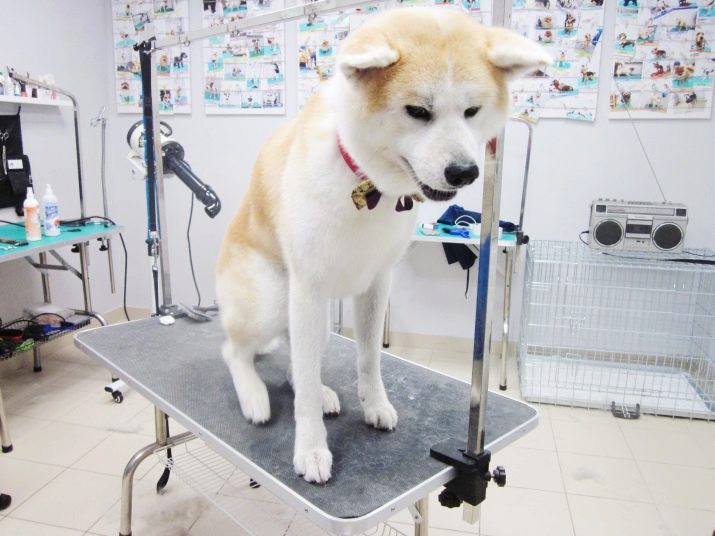
When starting to cut your own nails, you need to follow some rules.
- Since the claws of Akita Inu are very strong, you will need a large nail clipper to cut.
- Claws need to be cut in small pieces, even if they have a very impressive length. This must be done for safety purposes - in order not to injure the animal and not cause discomfort.
- If sharp edges remain after the haircut, they need to be trimmed and smoothed with a file, and the claws can be polished for shine.
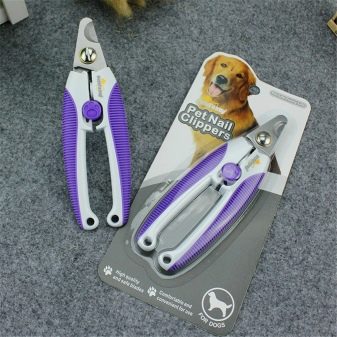
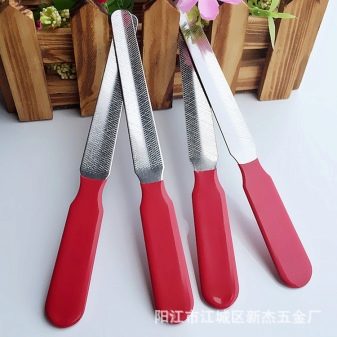
In addition, it is necessary to care for the ears, teeth and eyes of the dog.Ears can be wiped with special wipes or just cotton pads, there are many veterinary lotions for eye care, and veterinarians will help you deal with tooth problems.
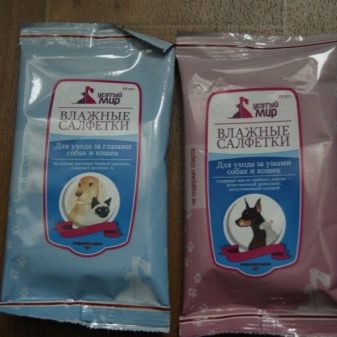
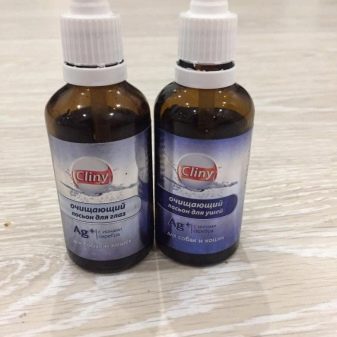
Obviously, looking after this dog is quite simple, the main thing is to perform all the procedures carefully, accurately and in a timely manner.
Feeding
In order for your pet to be healthy and active, you need to choose the right, balanced way of eating and adhere strictly to it. For example, if you feed the dog dry food, veterinarians do not recommend pampering the animal with food from your table or, conversely, when eating natural food, it is better not to add dry food to the diet, since the digestive system may not cope with such stresses, which will lead to indigestion .

As for food from the master table, it must be completely excludedUnless, of course, we are talking about steamed fresh vegetables, such products will even be useful for the dog. But most often people eat sweet, salty or spicy foods that are very harmful to our four-legged friends.
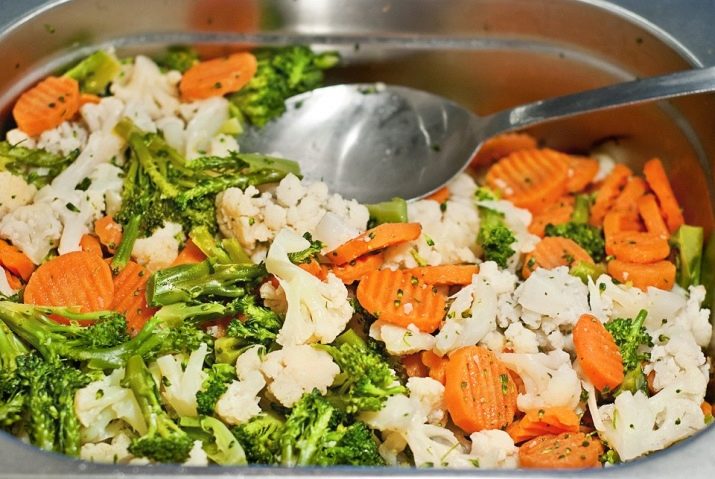
In addition, it is necessary to exclude small and tubular bones from the diet, the sharp parts of which can easily damage the internal organs of the animal, which can lead to very disastrous consequences.
Natural diet
If you decide to feed Akita Inu with natural food, you must first familiarize yourself with the list of allowed foods, which includes:
- dairy products;
- lean meats and offal;
- fiber and proper carbohydrates contained in rice, buckwheat and millet porridge;
- vegetables;
- fruits (can be included in the diet from 4-5 months);
- the eggs.
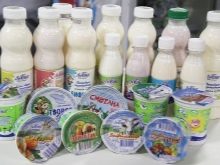
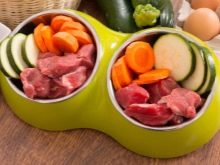
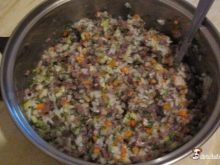
It is necessary to control the volume of servings of the dog, which should be calculated approximately in this way: for every 30 kilograms of dog’s weight, there is a portion of food weighing 400 grams. In addition, you need to control the protein content in the diet, since excessive consumption of it can cause an allergic reaction in the animal.
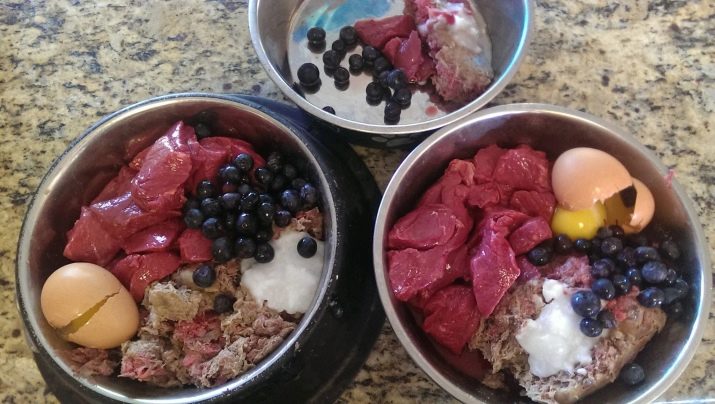
It is also necessary to take care of the frequency of feeding, as an adult dog eats only twice a day, while puppies need three to six meals.
Dry feed
When it comes to choosing dry food, some dog owners believe that they are all the same, so you can choose the cheaper option. This is an erroneous opinion, since the low cost of feed indicates only one thing - the composition contains low-quality raw materials. And this will not bring any benefit to the body of your pet.
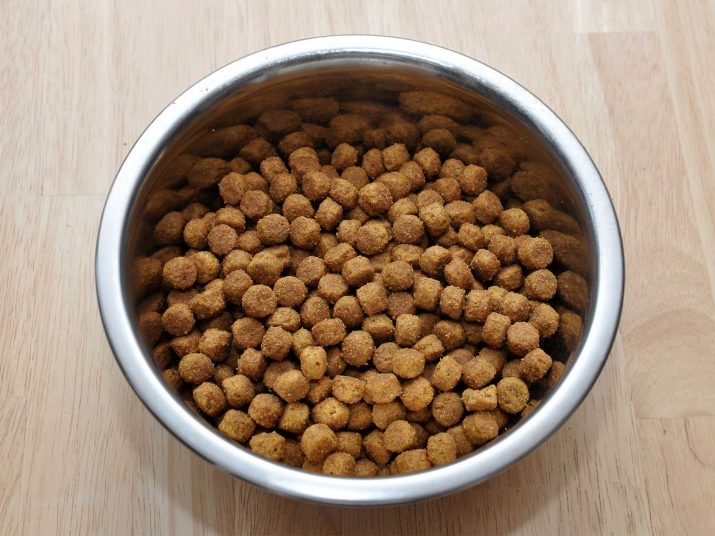
For feeding Akita Inu, it is best to use high quality feed. Many veterinarians recommend paying attention to some proven brands.
- Dukesfarm - British food with a high content of natural meat products. In addition, the feed is good in that its manufacture does not use chemical additives and taste enhancers.
- Eukanuba - feed, which is produced both in European countries and in Russia. It can rightfully be attributed to dietary nutrition, since the main protein components in it are chicken meat, lean lamb meat and low-fat fish fillet. There is a special line of veterinary diets, as well as medicinal feeds. In addition, the composition does not contain various additives of artificial origin.
- BritCare - A wonderful Czech food with natural ingredients in the composition. A large amount of meat goes well with the carbohydrate component in the form of cereals, allows the feed to be quickly absorbed and have a supportive and therapeutic effect on the joints and bones of the animal. In addition, this food is one of the best nutritional options for neutered animals.
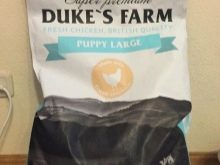
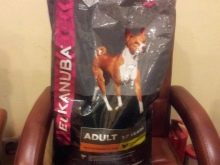
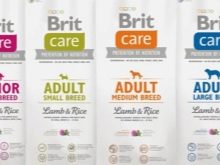
There are also many other brands that produce high-quality feed, so each owner can easily choose the option that suits his health condition and taste preferences.
Parenting and training
As previously stated, it is necessary to start raising and training a dog of the Akita Inu breed from an early age. It is up to 6–8 months that the animal assimilates information best of all, remembers commands, and also forms its opinion about who is in charge and who needs to be obeyed.
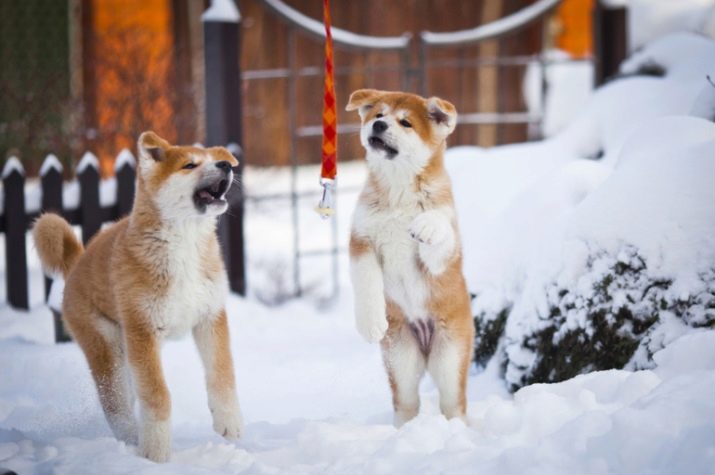
When training, it is necessary to consider some important nuances.
- The carrot and stick method is not acceptable. Akita Inu perceives only reward-based training methods well. In case of rough treatment and application of punishments, the dog may become isolated and stop listening.
- In the process of training, it is important to consider that a dog of this breed is very easy to distract, so it is necessary to exclude all distracting factors.
- The owner should become the undisputed leader for his pet, but this must be done without the use of brute force.
- Educational processes, training and training should take place in the intervals between meals.
- The result that must be achieved in the training process is the immediate execution of commands.
- If it is possible to connect a professional dog handler to the training process, it is recommended to do this, since it may not be so simple to independently build the correct learning process with a very wayward Akita Inu.
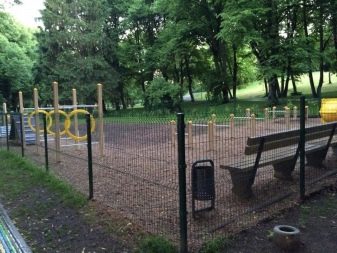
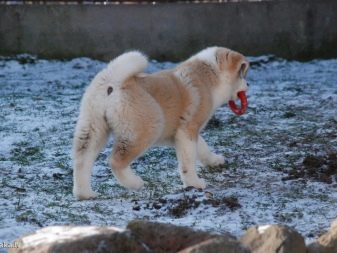
Health and Life Expectancy
Many factors can influence the health and longevity of this dog: from nutrition to external circumstances. On average, Akita Inu lives for 14 years, but there are also long-livers with a much longer life expectancy.
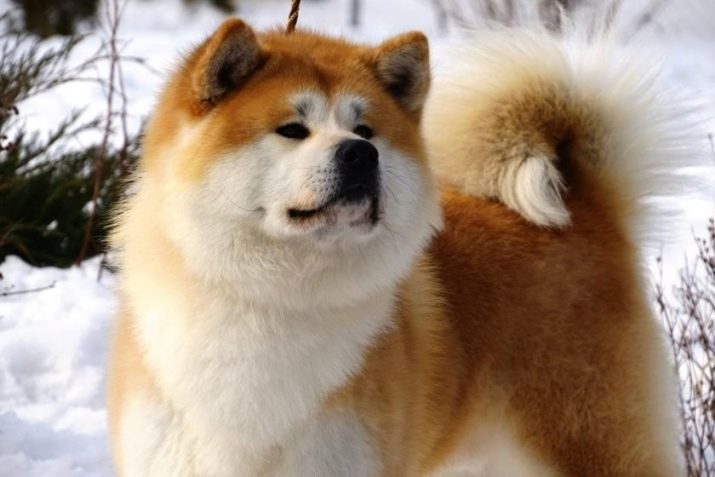
First of all, it depends on the health status of the pet. Akita Inu, although famous for their good health, is still quite often exposed to the following diseases:
- joint dysplasia, which is almost always hereditary;
- stomach upset - a disease acquired as a result of eating disorders or the use of inedible objects by a dog.
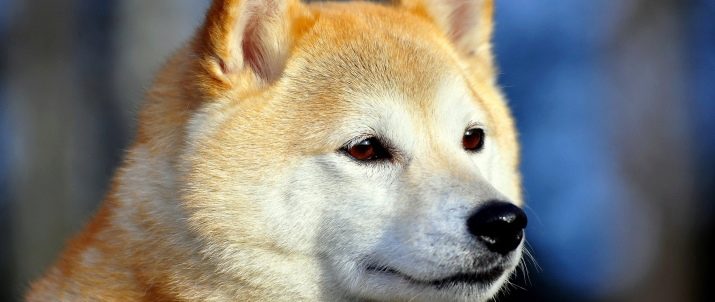
Among the hereditary diseases, eversion of the century is also noted, and thyroid gland diseases are attributed to acquired diseases.
It is worth noting that with the correct and timely treatment of these diseases, Akita Inu will be able to live a long happy life, and proper care and a reverent attitude will help extend the life of your pet.

Interesting Facts
Perhaps there is not a single person who has not heard a touching, but rather tragic legend about Hachiko - a faithful and loyal Akita Inu who has been waiting for his dead master for many years.
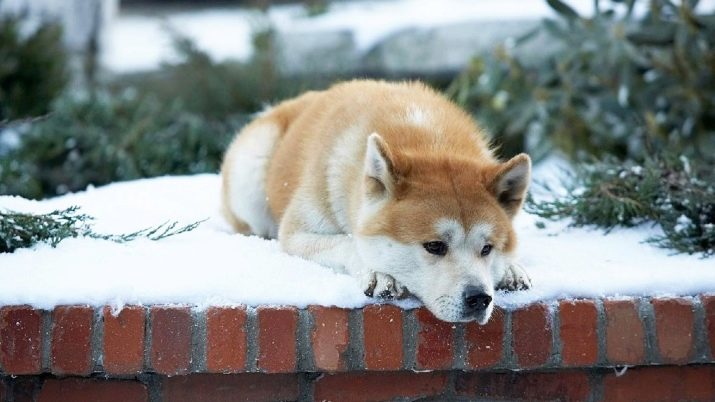
Many can familiarize themselves with this story through books, articles or an incredibly moving film, but not everyone can immediately believe in this amazing story that shocked the people of Japan in 1932, and a little later hit the whole world.
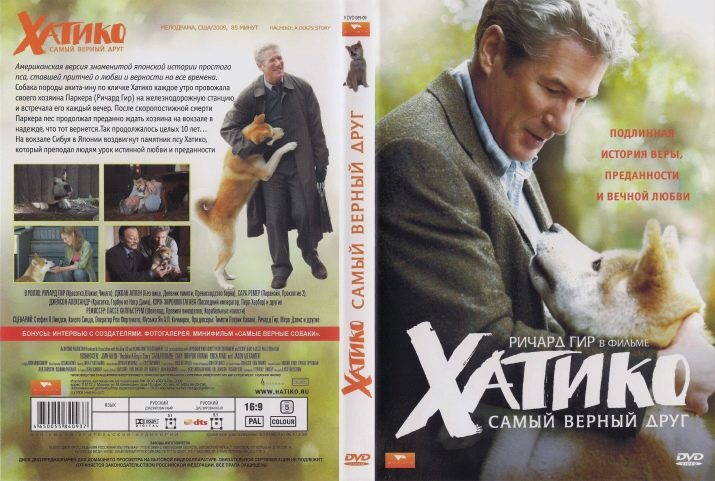
A faithful dog came to the railway station every day to meet his master and go home with him, but one day a tragedy happened with the owner of the dog - he died right at work and did not return home.
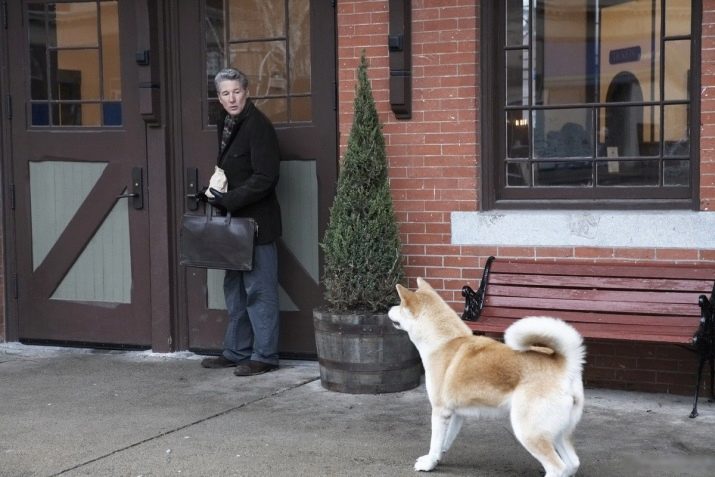
For the next nine years since the master’s death, a devotee of Hachiko continued to come to the same station every day by the time his master usually returned from work. The dog continued to wait for him, no matter what.
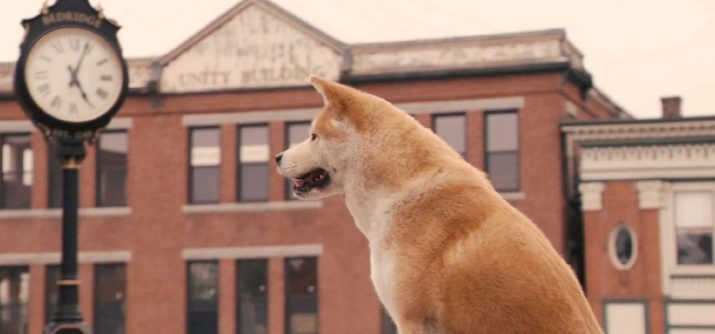
The love and loyalty of this dog conquered the inhabitants of Japan so much that the day of his death was even symbolized by universal mourning. And the monument erected on the waiting area of Hachiko after his death became a symbol of selfless love and devotion.
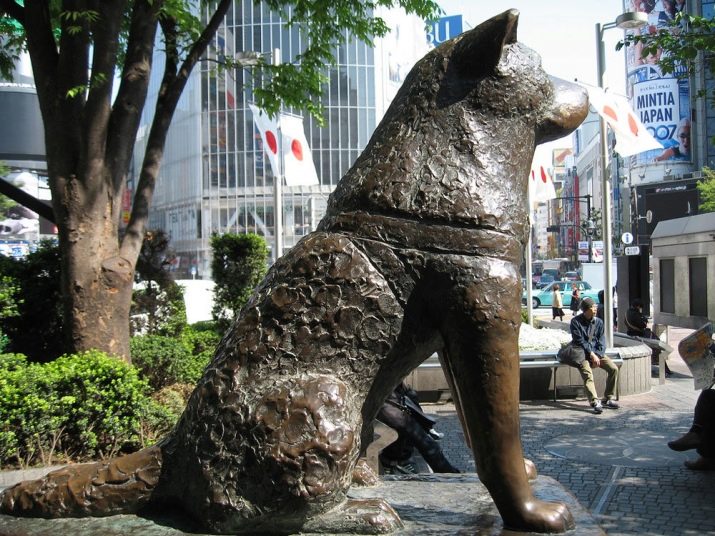
Reviews
It is quite difficult to find negative reviews of owners about this or that animal, because everyone loves his pet and even sees something good in the negative aspects.Mostly, Akita Inu dogs speak poorly of those who, without paying attention to their upbringing, expected the dog to be completely submissive and obedient.

For example, some people think that solid treats are excessive pampering, but at the same time they complain that the puppy chews shoes and furniture elements during the growth period.
Others, not providing the dog a fairly active walk, are unhappy with its excessive energy.
People who give the necessary attention to the training process note only the positive aspects of keeping this dog, which are manifested both in everyday life and in conditions of hiking, out-of-town trips, hunting or even fishing.
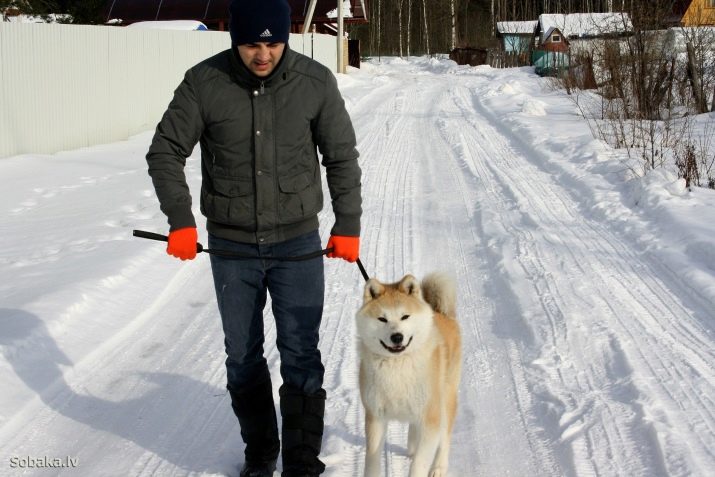
When choosing a pet of this breed, you should not pay attention only to such reviews, since, based on them, there may be a false impression about the breed. It is best to consult with a dog handler, evaluate your own strengths and only then make a decision.
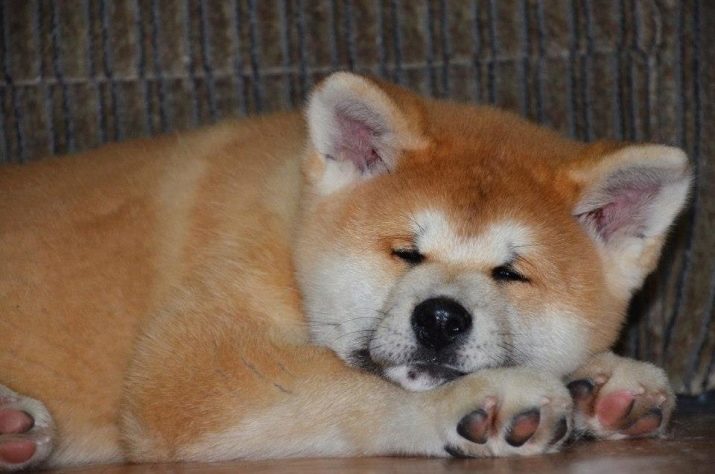
In the next video, you will learn even more about the Akita Inu dog breed.
